January Homesteading to-do List
I love lists. They are really the best way for me to keep on top of all the things that need to be done on our homestead. If you are a list lover, then this January Homesteading to-do List is just what you need to make an annual list of things to get done without worrying you are forgetting something.
Classic Homesteading tips, like list making, that work just as well today as they did decades ago.
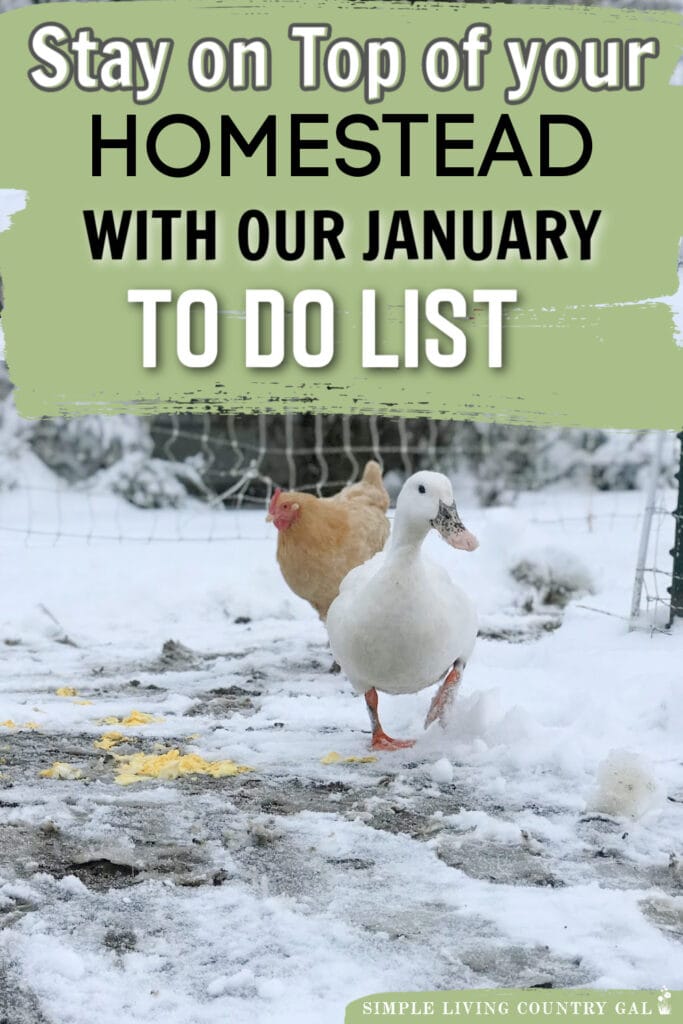
Having a homestead is a lot of work, especially since there are things that need to be done each month to ensure everyone and everything is flourishing. Even though most of our homestead is under snow and ice during the month of January, there are still things that need our attention, things like planning, prepping, and repairing.
Whether it’s repairing drafts in the barn or chicken coop, planning your vegetable garden, or nurturing your compost pile, each area needs attention even in this cold month. To help, we have a list of tasks and projects to tackle in January to keep your homestead running smoothly all year round.
January Homesteading To-Do List
Not every homestead is alike, and for that reason, this list is more general than some of our others. Use this as your starting off point and add in tasks that fit your setup specifically. Be sure to grab your free Homestead Project Planner below to help you customize an annual plan for the new year.
Livestock
Animals need our care 24 hours a day, 7 days a week, but even more so in the winter. It’s true many animals have fur to help them combat the cold temps, but that fur can mask a myriad of health issues.
One of the best tips I ever received from a local farmer was to touch your animals often. This will familiarize you with their weight and make-up so you can better catch things when they are off.
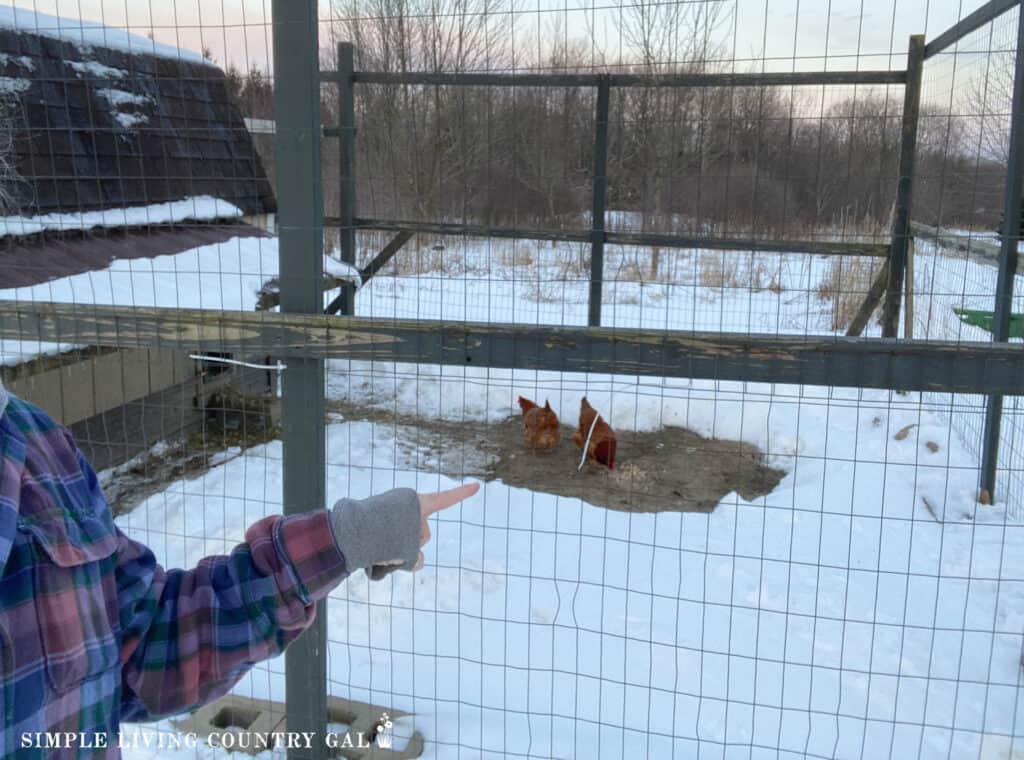
Winter Care of Livestock:
#1. Shelter Check: Double-check the shelter conditions for your livestock. The barn or coop should be adequately insulated with vents to bring in fresh, clean air.
Vents are good to have, whereas drafts are not. If you find any areas where drafts are getting in, use boards or other insulation to close them off.
#2. Feed and Water: Give fresh water daily, ensuring it is available at all times. If you live in a frigid area, invest in heated water buckets or heaters to prevent freezing. You may also what to purchase better quality hay such as 2nd or 3rd cuttings to encourage regular eating.
Fill a few feeders with minerals that your livestock can access freely. This will help each animal fight off pests and diseases more easily.
Farm Innovators 1.5 Gallon 60 Watt Electric Powered Heated Pet Water Bowl with Thermostatic Control and Anti Chew Cord, Green


#3. Bedding: Provide additional bedding to keep animals warm and comfortable during the cold. Bedding also helps to absorb any smells that can cause lung issues. If you are using the deep litter method, be sure to add new bedding routinely to keep things dryer.
#4. Exercise: Despite the cold, animals need regular exercise as well as some time in the sun. Let them out a few hours a day to soak up the rays. You can also put a few climbing items in their pen to encourage playtime, such as spools or bales of straw.
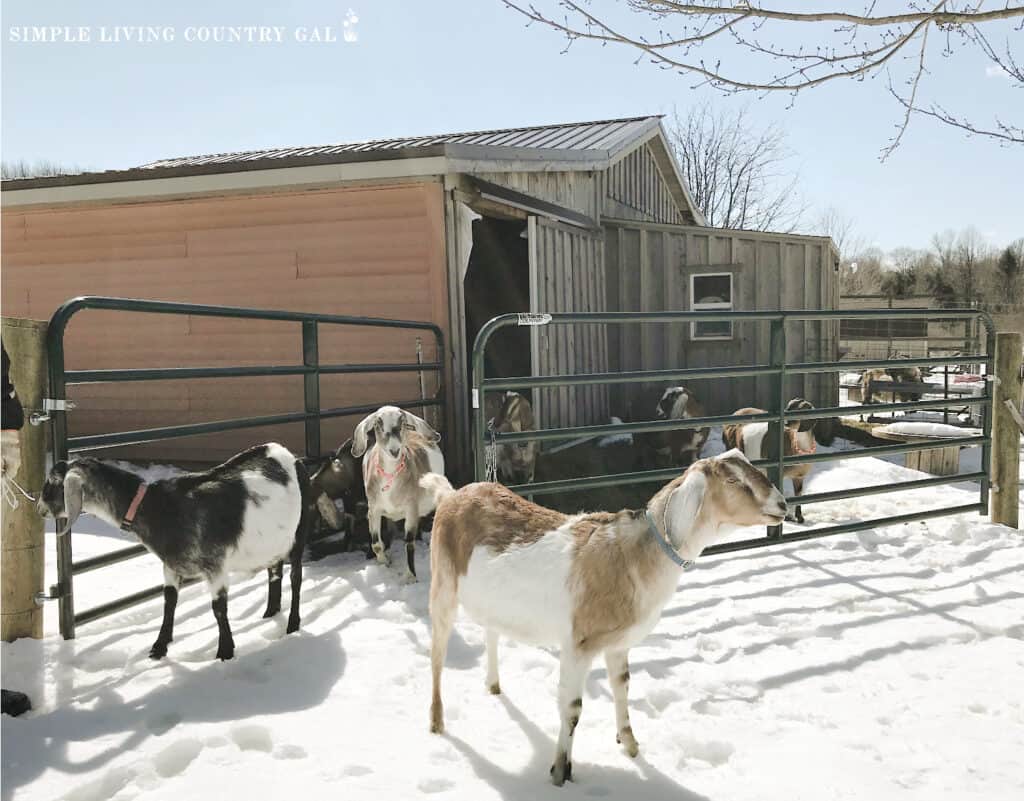
Finally, keep water buckets, feed bowls, hay, and mineral containers spread out so your animals need to move to eat and drink.
#5. Emergency Preparations: Have contingency plans in place for severe weather conditions. Make sure you have enough feed and medical supplies and are storing them appropriately. If you do not have a dedicated feed room, add this project to your new year list of goals.
Related: How to Store Feed on Your Homestead
Health Check and Care of Livestock:
#1. Body Condition: Be sure to touch and feel your animals to see if their thick winter fur is masking any issues, such as weight loss. Also, keep notes of any issues in your livestock journal, and have a page dedicated to each animal.
Chicken Journal and Guide
#2. Hoof Care: Foot problems can escalate during the winter due to the damp and mucky conditions. Regular hoof checks and care can prevent infections and other conditions.
Create a hoof care routine to keep everyone’s feet in good condition.
Upcoming kidding, lambing, or calving.
1. Health Check: Begin with a thorough health inspection of your pregnant animals. Look for any signs of illness or discomfort and consult a veterinarian if necessary. If you raise goats, this Goat Health Checklist guide will help!
2. Nutrition Assessment: Review the dietary needs of your expecting livestock. Pregnant animals often require an increased amount of nutrients. Adjust their feed and supplement intake as necessary.
3. Shelter Preparation: Ensure the birthing area is clean, dry, and warm. Make any necessary modifications to the shelter to accommodate the new arrivals. If you do not yet have birthing pens, add this project to your yearly goals list.
Birthing pens can be very helpful with kidding and reducing the stress for the mom, newborns, and you!
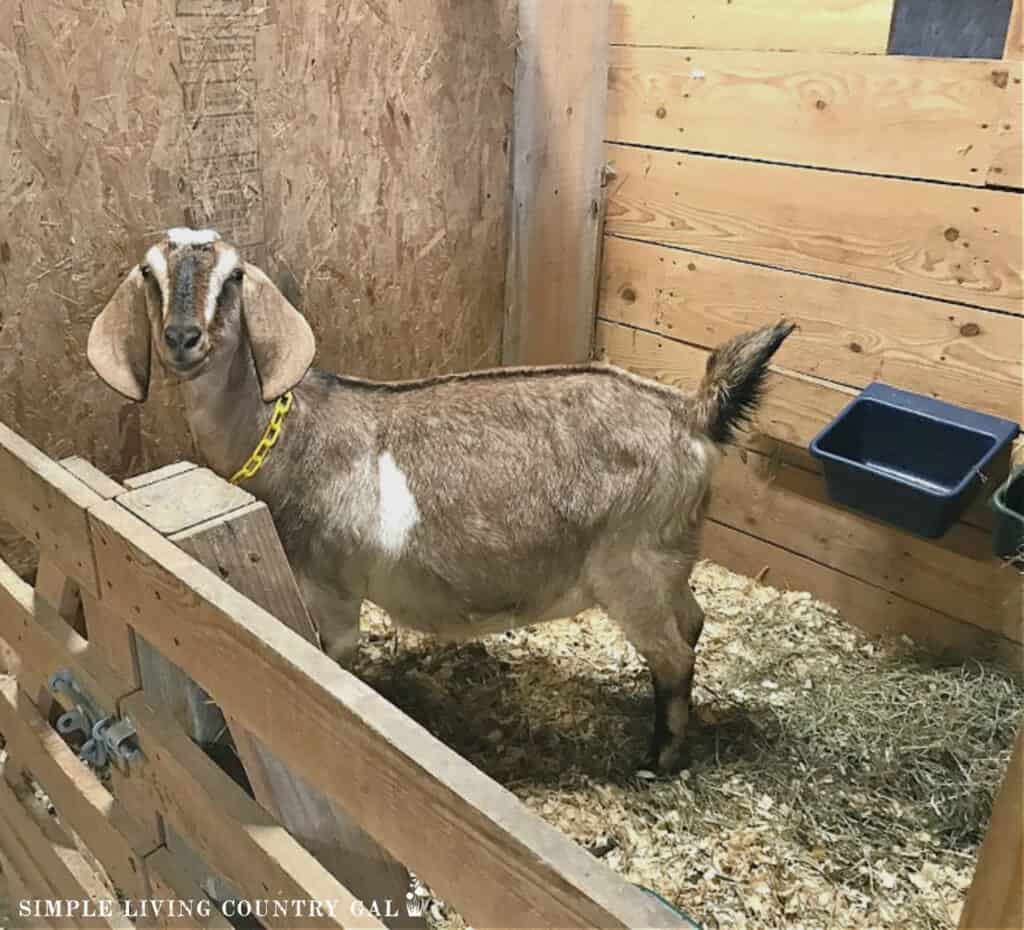
4. Gather Supplies: Stock up on essential birthing supplies, such as towels, iodine, gloves, and a lambing or calving kit. Get our full list on How to Set Up a Birthing Kit so you can be prepared when your goats kids.
Read this list of 13 Signs Your Goat is About to Kid.
5. Set up Surveillance: If possible, set up a camera or baby monitor better to keep an eye on your animals as birth approaches.
6. Record Keeping: Update your livestock journal with any changes or observations. This record will be crucial for tracking the health of the mother and the newborns.
7. Training: Brush up on birthing procedures and emergency protocols. If you’re new to livestock birthing, consider attending a local workshop or consulting with experienced farmers or a veterinarian.
Stay proactive with the health and well-being of all your livestock for a more successful and profitable homestead.
Chicken Coop
Ensuring your flock is tolerating the weather is a top priority of each month in the winter. Put yoru attention to your chickens, the coop, and the outside run and update when needed.
#1. Check the Coop: Walk the perimeter of your coop and look for any areas where rodents may be able to get in. A mouse will not hurt your chickens, but it can damage eggs. Use scrap pieces of wood to cover up holes as you find them.
#2. Add bedding to keep the inside smelling fresh and the floor dry. A fresh layer of wood shavings can make a huge difference to the inside of a winter coop.
#3. Stuff nesting boxes with soft hay to help protect the eggs and prevent freezing. Change out or add more as needed.
#4. To increase egg laying, add in solar lights to the inside of the coop. Adding just a few hours of light can encourage your hens to lay more frequently.
#5. Check your flock for any health issues. Pick them up and hold them so you can better feel their body structure. Make a note of any birds that have loss weight or are missing feathers.
#6. Add insulation inside the coop to help keep the area warmer. You can stack bales of straw or hay in the perimeter to keep the cold air out.
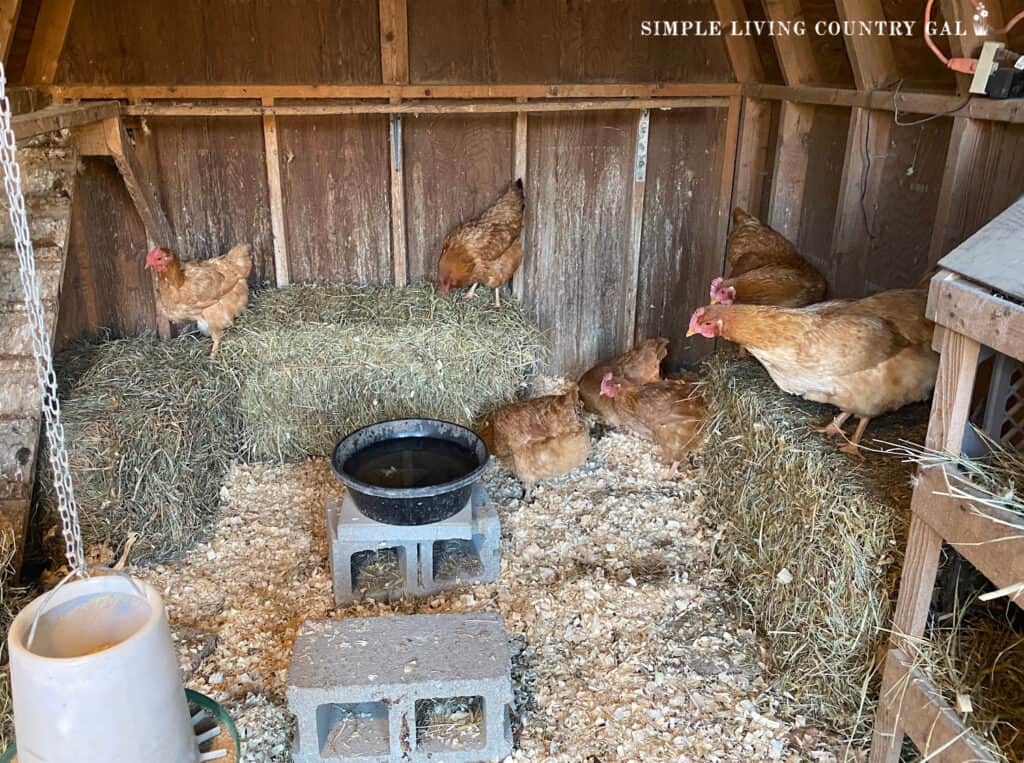
Being proactive with your coop and chickens will help to keep everyone healthy by bringing in farm-fresh eggs more consistently.
Garden
January might seem like a quieter time in the gardening year, but there are plenty of tasks that can help prepare for the upcoming growing season. This month is all about planning, preparation, and maintenance.
#1. Order Seeds: Start planning your garden by ordering seeds for the upcoming growing season. Consider trying out new varieties or sticking with old favorites.
#2. Plan Your Garden Layout: Use this quieter time to plan your garden layout. Consider crop rotation, companion planting, and maximizing space in your garden beds.
More Garden Planning Reads:
#3. Repair Garden Tools: Take stock of your gardening tools and repair or replace any damaged ones. This will save you time and frustration once the busy planting season begins.
Our Favorite Garden Tools:
Gardening Hand Tool Set 3 Pack – MDSXO Heavy Duty Gardening Kit with Non-Slip Soft Ergonomic Handle, Great Garden Gift for Women Men[Stainless Steel]![Gardening Hand Tool Set 3 Pack - MDSXO Heavy Duty Gardening Kit with Non-Slip Soft Ergonomic Handle, Great Garden Gift for Women Men[Stainless Steel]](https://easyproductdisplays.com/wp-content/uploads/2017/07/buy6.gif)



#4. Start Seedlings Indoors: For early spring crops, start your seedlings indoors under grow lights or near a sunny window. Read our guide on How to Start Tomato Seedlings Indoors for an easy way to grow.
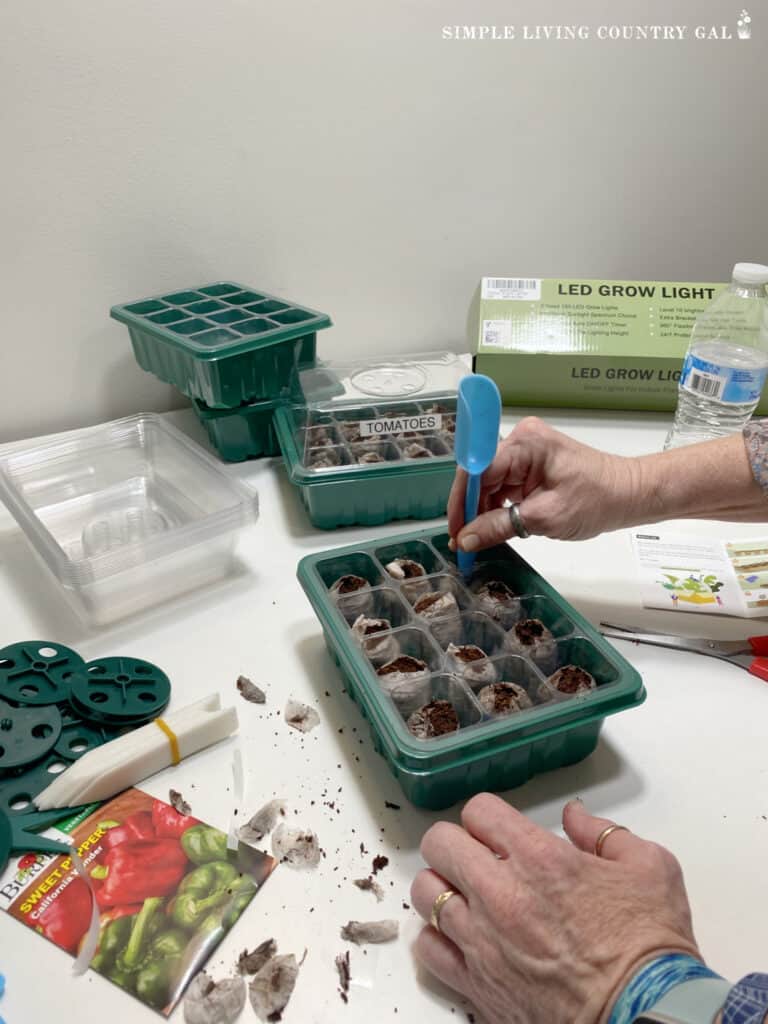
Barn and Outbuilding
Next are buildings on your homestead. Weather can take its toll, so regular inspections and repairs will help you stay on top of any issues before they get out of hand.
#1. Inspect Roofs and Gutters: Check the condition of your roofs, gutters, and downspouts. Clear any debris that has accumulated and make any necessary repairs.
#2. Clean out Barns and Sheds: Take advantage of quieter days to clean out and organize your barns and sheds. Dispose of any old or damaged equipment and supplies. Sell what you no longer use online or at local swaps.
Don’t Miss: How to Set Up a Goat Barn
#3. Check Fences and Gates: Walk the perimeter of your property and inspect all fences and gates for any damage or weak spots. Repair or replace as needed.
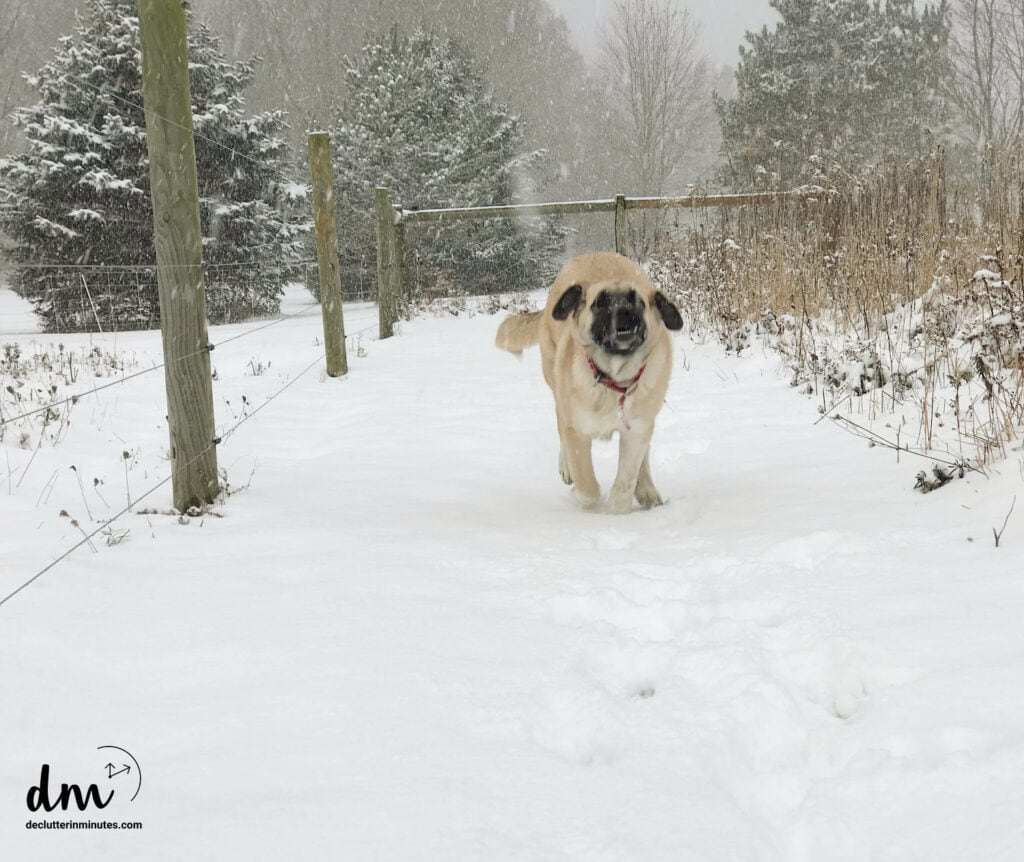
Planning
My favorite part of January is planning for the upcoming year. I like to break things down by month, so I have one project or repair for each month, scheduling it out where it makes the most sense. This not only gives me an idea of what is getting done and when. It also gives me time to save up the money for any supplies needed.
#1. Plan Garden Expansions: Now is the perfect time to start planning any new gardening areas that you hope to add. Be sure to refer to your garden planner from previous years so you are adding a complimentary area and not one that will compete with other areas for resources.
#2. Plan Any Barn Expansions: If you have been thinking about adding on to your barn, now is the time to do some research and start drawing out plans. Check with local building codes and regulations before getting started.
#3. Plan Livestock Breedings: If you have livestock, now is the time to plan for any breedings that need to take place in order to expand your herd or flock.
#4. Schedule Maintenance: Make a list of all the maintenance tasks that need to be done throughout the year and schedule them out on your calendar. This could include things like changing oil in tractors, sharpening tools, and cleaning out gutters.
#5. Create a Budget: With all of your homestead tasks and projects, it’s important to have a budget in place. Take stock of what supplies you currently have and what you may need to purchase. Consider alternative options, such as bartering or buying used equipment to save money.
#6. Review Homestead Goals: Take a few moments to review your homestead goals for the previous year. Assess what was accomplished and make any necessary adjustments for this year’s goals. Consider creating a vision board to help visualize and manifest your goals.

#7. Planning for potential expansion or change: As you continue to work on your homestead, think about the future and how you can continue to improve and grow. Consider researching new techniques or technologies that could benefit your homestead and finding ways to implement them.
Always have a plan in place for potential changes or expansions so you are prepared for any opportunities that may arise.
As you prepare for another year of homesteading, remember that flexibility, preparation, and a solid plan can make a big difference. January is the best time for reflection, planning, and setting a strong foundation for the year ahead on your homestead.
Whether it’s budgeting, livestock breeding, or maintenance, each task contributes to the smooth operation and continued growth of your homestead. Stay organized, stay committed, and always keep sight of your goals as you venture forth into a productive new year of homesteading.







![Gardening Hand Tool Set 3 Pack - MDSXO Heavy Duty Gardening Kit with Non-Slip Soft Ergonomic Handle, Great Garden Gift for Women Men[Stainless Steel]](https://m.media-amazon.com/images/I/41qgPIFVlJL._SL500_.jpg)



